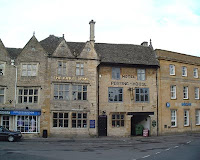Riding Postilion and other coaching tales!
 This is the Craven State Carriage, a Victorian coach said to rival in magnificence Queen Victoria's royal carriage (she would not have been amused)! It is part of the carriage collection at Arlington Court, a National Trust property in Devon where you can not only go to view some wonderful horse-drawn coaches but you can try your hand at driving one as well.
This is the Craven State Carriage, a Victorian coach said to rival in magnificence Queen Victoria's royal carriage (she would not have been amused)! It is part of the carriage collection at Arlington Court, a National Trust property in Devon where you can not only go to view some wonderful horse-drawn coaches but you can try your hand at driving one as well.A couple of weeks ago I was lucky enough to go to an illustrated talk about the history of carriages, given by Colin Henderson, who had been the Queen's Head Coachman. Not only did he have some wonderful anecdotes about the Golden Jubilee but he had also worked as a riding specialist and stuntman on a number of films and included the role of highwayman on his CV! He gave us a brisk trot through the early history and background of carriages - the word coach, for instance, comes from the Hungarian Kote - but it was when we got onto the late eighteenth and early nineteenth century that my note-taking went into overdrive because he had so many fascinating little details that I had never read in the books so I thought I would share a few of them in this blog!
After explaining to us the difference between "the leaders" - the leading pair of horses - and the "wheelers," the two closest to the carriage, he told us that to ride postilion meant riding one of the front horses and leading the other. This was a hazardous enterprise as it meant that one of your legs was between the two horses and was in danger of being crushed. Postilions wore a steel leg guard to protect them in this position.
The provision of lighting on both the inside and outside of carriages has always interested me so I asked if there was any illumination inside and was surprised to learn that there were candle-lamps inside a carriage as well as out. The smoke apparently made a mess of the upholstery! I had not quite appreciated what a hazardous business travelling at night could be, especially on the Mail Coach. The external lights carried no further than the first horse so you could not see the road ahead at all. Coachmen had to have extremely keen hearing to listen for the sound of approaching hooves. Since the mail carriages travelled at up to 10mph and some coachmen accelerated down the hills in order to gain momentum and make up time, the possibility of running into the back - or front - of another coach or hay wagon was very strong! I was also fascinated to hear that the coaches changed horses on average every 10 to 12 miles, or 15 on the flat, and that a change of horses took only 2 minutes, rather like changing the tyres on a Formula 1 racing car! Mail Coaches were numbered like buses are now and 16 hands was the largest horse that could be used to pull a three and a half ton Mail Coach because anything taller didn't fit under the coachman's footboard.
There were also some fascinating facts about the Grand Tour. The Duke of Beaufort's travelling carriage was decorated in Regency stripe and had secret lockers under the floor for his valuables. It was rather like a caravan; the cushions folded down to create a full length bed! Other luxurious touches included silk-lined steps which were folded up inside the carriage to protect them.
I enjoyed learning the derivation of a few other coaching-inspired words as well - the "fore-gone" was the carriage that you sent on a day ahead with your servants, linen and silver, so that when you arrived, everything was prepared (or concluded!) The phrase "cheerio" originally comes from calling for a sedan chair - chair ho!
My favourite anecdote from the Victorian period was that the footboards on ladies' carriages were enormous because it was thought indelicate that a lady should have to sit looking at the horse's posterior! During this time a combined whip and parasol was developed which looked extremely complicated to use. I also liked the pictures of little "baby carriages" used by the British in India in the nineteenth century. These were developed to enable the infant to "take the air." They were drawn by a ram or a heifer and were led by a groom with the nanny walking alongside!
All in all this was a fascinating gallop through hundreds of years of coaching history and was a talk packed full of useful snippets of information that I'm sure will appear in some of my future books!



Comments
Jan - well, it sounded convincing to me, LOL, but the derivations in my dictionaries say otherwise!